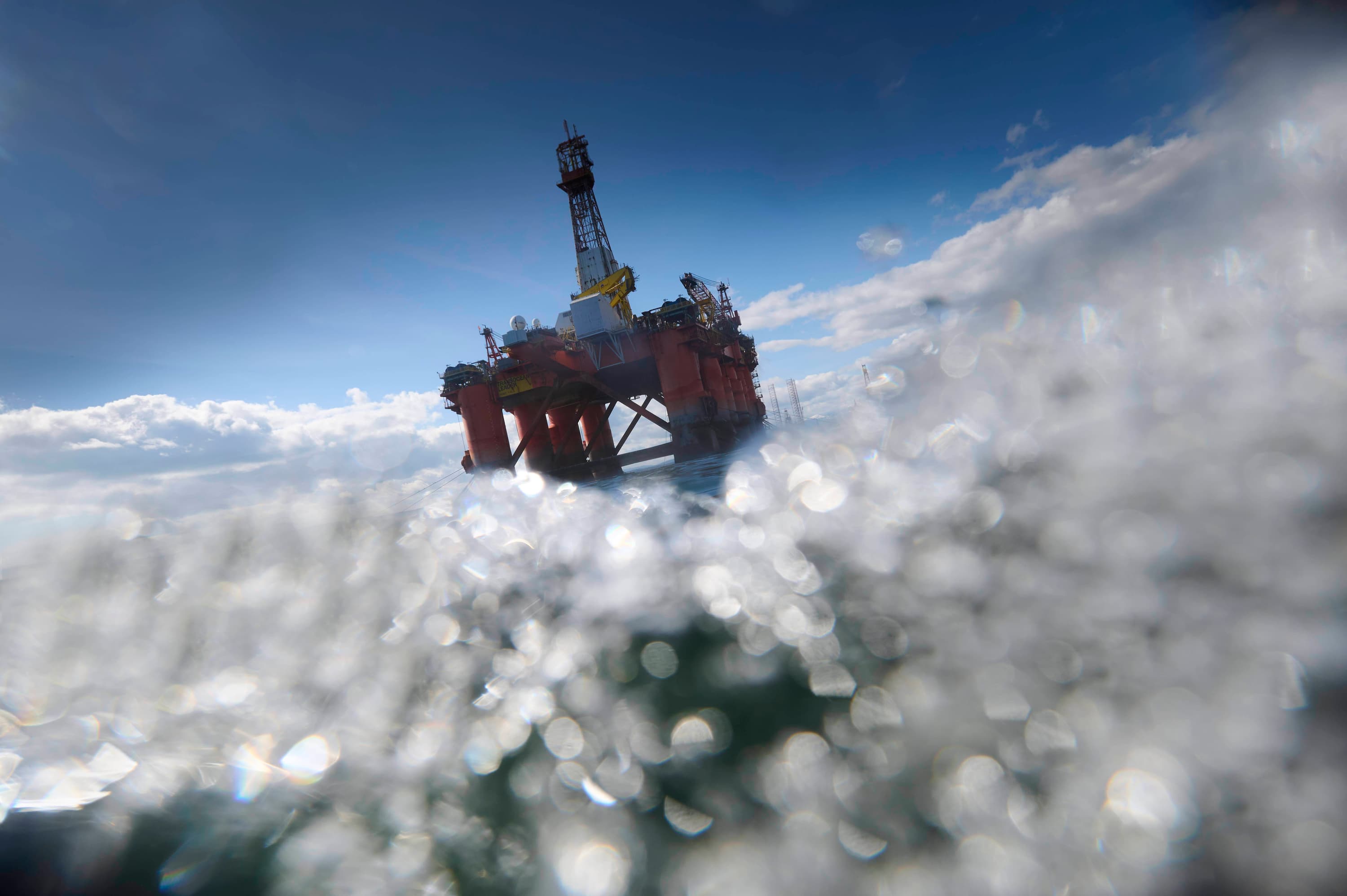
Producing documentary films in a climate crisis
Is it possible to produce documentaries in a sustainable way?
The panel on ‘Producing documentary films in a climate crisis’ examined this issue from a wide range of angles, touching upon the sustainability of film production itself, the impact of environmental and activist documentaries on society, as well as challenges posed by the international co-production system.
The Industry Talk: Producing documentary films in a climate crisis took place at ITA on November 11, moderated by British filmmaker Emma Davie, whose film The Oil Machine (which screened last year at IDFA) looks at how the oil industry impacts our world.
The panelists included Danish filmmaker Phie Ambo, represented this year at IDFA Forum by the project Fire, Water, Earth, Air; Gugi Gumilang, executive producer of Indonesia's non-profit In-Docs which includes the pitching forum Docs by the Sea; Georgian director Rati Oneli, whose film City of the Sun screened at IDFA in 2017; and Jeroen van der Zalm, Senior Policy Advisor at the Netherlands Film Fund.
Three of the speakers showed excerpts from films that shed a particular light on the panel’s topic; Van der Zalm opted for Gerlach by Aliona van der Horst and Luuk Bowman, world-premiering in IDFA’s Signed section. The titular character is an 80-year-old farmer working in one of the most densely populated, heavily industrialized areas of the Netherlands, between Amsterdam and Schiphol airport, and struggling with rising water levels.
“This tension between the context in which he’s working and the way he has been doing this all his life is a good parallel with us as film funds, and the tension between financing beautiful films and also taking into account societal issues like sustainability”, Van der Zalm said.
Water is rising in Denmark too, and Ambo showed a clip from the above-mentioned project that she is working on with three other directors: Ewa Cederstam, who tackles wildfires in Sweden; Rógvi Rasmusen, whose segment deals with air and storms in the Faroe Islands; and Janne Lindgren, who works with landslides in Norway.
“I wanted to make a production that’s as climate-friendly as possible,” Ambo said. “So we transport ourselves as sustainably as possible. But the main shift in this production form is that the other directors do a much better job than I could in their countries; they are much closer to the spirit that’s there. So to me, I think that there are great possibilities in these collaborations that can also include many more different voices around the globe.”
Next up was a clip from Oneli's City of the Sun, a film about the town built in the Soviet era around manganese mines, a metal used in many human activities – from medicine to steel to alloys, batteries, fertilizers, etc. The majority of the world's demand for manganese is filled from that tiny city.
“Today, you see just a sort of grab for resources, which the international mining corporation is pursuing. And it’s now a kind of no man’s land”, Oneli explained.
Gumilang then said that in Indonesia, with In-Docs, they are trying to build a sustainable ecosystem for filmmakers. The Southeast Asian industry is still heavily reliant on collaborations with Europe and North America.
“At the same time, we try not to fly a lot of people in, so I the idea is to make it effective and relevant for the filmmakers to meet the decision-makers and potential partners”, Gumilang stated.
One issue he identified is how to amplify the message of documentary films.
“Sometimes the trickiest part is that a lot of projects from Asia are based around activism. So, by including organizations that are really focusing on certain themes – in this case, climate change – we are trying to build alliances between filmmakers and organizations focusing on the issue, which could be a way to strengthen the campaigns’ impact”, he explained.
One of In-Docs' programs is Vitamin Docs: an online platform for documentaries on topical issues, including climate change and social justice, aimed at building a better, sustainable ecosystem that can have an effect on audiences as well.
Integrity of the documentary film industry
Moving on to the integrity of the film industry – and the documentary industry in particular – a major theme in recent years has been the carbon footprint and emissions resulting from film productions.
“As a funding institution, what we can do is fund films,” said Van der Zalm. “And we can raise awareness amongst filmmakers, because nowadays making a film without international co-producing is almost impossible.”
The Netherlands Film Fund is currently negotiating a co-production treaty with Indonesia, which in addition to obvious benefits for filmmakers from both countries, presents a challenge in terms of environmental concerns.
“So you’re constantly confronted with this question on the one hand, and you want to facilitate filmmakers to make beautiful productions, and a creative collaboration is key to that”, he added.
Working with local crews is one way of both supporting the local industry and the environment. However, filmmakers from developed countries often fail to make use of this opportunity.
“I often get asked those questions, especially for the filmmakers who want to cover their subject in Global South countries, because they’re going to bring whole crews. Similarly, in our pitching forum, we try to curate more precisely which potential co-producers we are bringing to Indonesia, who are the ones that can really work with local filmmakers and have a potential for collaboration”, Gumilang explained.
Van der Zalm gave the example of Suriname, where many Dutch filmmakers go with crews of up to 50 people.
“What we are currently doing is trying to reinforce capacity building in the local film industry. So that within a couple of years, these crews might also be able to make use of local expertise”, he said.
Challenges of producing films in a sustainable way
Producing films in a more sustainable way has turned out to be a challenge for Davie, who elaborated on how she and her crew tried to use green technologies, including electric vehicles.
“The cameraman was driven potty by having to pause in the middle of filming to go and park God knows where without even a coffee shop nearby to plug in our electric vehicle. And time is ticking, the light’s changing, there’s nowhere around to get a good shot, so I think one question that I have is, is this the new world of green filmmaking that we’re moving into? Is it something that funders will acknowledge is more expensive?”, she asked.
“At this moment, producing in a more sustainable way comes with extra costs,” Van der Zalm admitted. “But I really think that within five to ten years we’ll see sustainably produced films in the Netherlands, because when you make a specific choice in making your production more sustainable, for example, you don’t travel back and forth to your location but you stay in a hotel, you’ll also reduce costs, so it’s not necessary that your production becomes more expensive.
“But right now you need to adapt, and this phase of adaptation will probably come with extra costs. As a film institution we don’t have the budget for that kind of investment, but we do lobby towards the government to take this into account. So it’s a discussion, and you need to find your strategic partners in that at government level, from the film sector itself, but it’s also related to society as a whole.”
